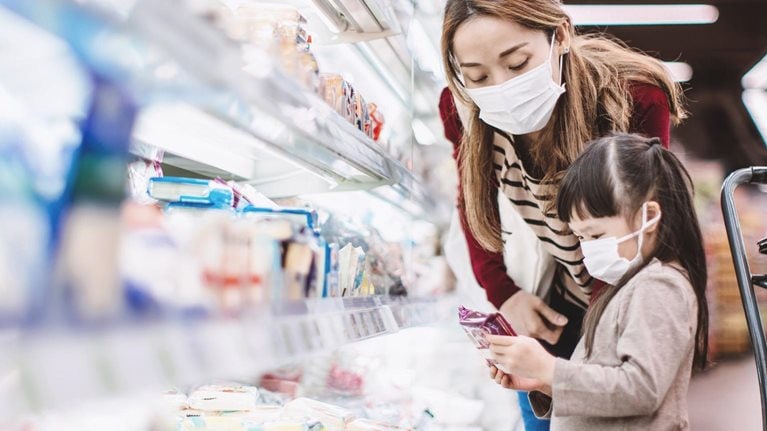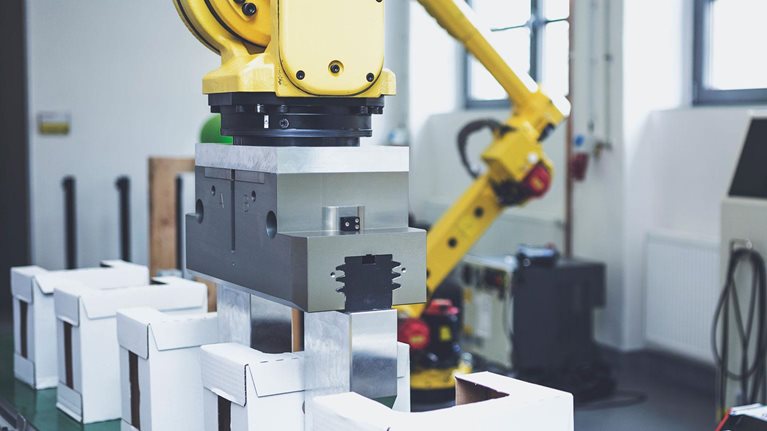Sustainable-packaging efforts are often centered around a desire to decrease leakage, improve circularity, reduce carbon footprint, or a combination of the three. Although brand owners, retailers, and regulators are aware of the need for sustainability, there is no global alignment on how to measure sustainability across these interlinked elements. Recently, major consumer-facing companies have ambitiously committed to goals of zero or significantly reduced greenhouse-gas (GHG) emissions to improve their overall corporate sustainability performance. At the same time, their focus on packaging has so far mainly been around improving recyclability and increasing recycled content. To understand the true carbon footprint of packaging, we believe it is important to take an end-to-end view of the value chain and apply a science-based approach to quantifying emissions profiles. To do this, we have developed a methodology that recognizes both the direct and indirect impact of packaging materials. In this article, we will focus on the carbon-footprint aspect of packaging sustainability and its trade-offs with recyclability and recycled content. One key finding, which is not always well understood by consumers, consumer-facing companies, and regulators, is that the lowest-carbon material does not always have the highest recyclability or use of recycled content, requiring a decision on which aspects of packaging sustainability get prioritized. Against this backdrop, we offer three key lessons to help packaging players stay ahead of the game.
Three elements of packaging sustainability
Sustainability in packaging can be broken into the following three main elements: eliminating leakage of packaging into the environment, increasing the recyclability and use of recycled content in the packaging, and reducing the carbon footprint of packaging (Exhibit 1).

For brand owners and retailers, the focus for packaging has been primarily around circularity—recyclability and recycled content—but there is growing interest in carbon footprint and elimination of waste leakage. Furthermore, it’s important to recognize that all three sustainability elements are interlinked and that, in fact, there are some important trade-offs to consider when thinking about how to optimize overall sustainability in packaging.
To understand the true carbon footprint and overall sustainability performance of different packaging materials, we have developed a science-based methodology that links leakage elimination, circularity, and carbon footprint, quantifying the entire direct- and indirect-carbon impact from end to end of the value chain (see sidebar “Methodology”). In this article, we will focus on the carbon-footprint aspect of packaging sustainability and its trade-offs with recyclability and recycled content.
Sustainability benchmarking: Two illustrative use cases
Let us take a look at two relevant use cases: beverage containers, such as those used for carbonated soft drinks, and food-service cups for cold drinks (Exhibit 2). Both of these segments are sizable and under increased regulatory and public scrutiny.

Beverage containers’ higher recyclability does not necessarily equal a better carbon footprint. Viewed through a “recycled and recyclable” commitment lens from brand owners, aluminum cans and glass containers perform relatively well—70 percent versus 46 percent global recycling rates,1 respectively.2 However, consumer perception is only partially aligned with this view: consumers rank glass as among the most sustainable materials but metal cans among the least sustainable.3 Moreover, if we instead prioritize carbon impact, PET (polyethylene terephthalate) plastic bottles appear more favorable because aluminum cans and glass packaging have two to six times, respectively, the direct and indirect carbon footprint when compared with PET plastic bottles. This is largely the result of the more carbon-intensive production processes and transportation of these materials, which are difficult to offset even with higher overall recycling rates.4
Food-service cups’ greater reusability can advance carbon-reduction goals. Recycling rates for food-service cups are relatively low across our three example substrates. In terms of direct and indirect carbon footprint, a single-use paper cup has a significantly lower carbon footprint compared with a single-use plastic cup, due to the overall low carbon emissions of producing a paper cup. Switching from single-use consumption to multiuse consumption using a glass container would further cut the carbon footprint by 50 to 60 percent, while also reducing waste by extending the product’s lifetime. This reflects a current market trend around introducing more returnable or refillable containers and packaging in personal care, food service, and other areas. That said, scalability has yet to be proved for many of these models, and refill-and-reuse approaches are still in their infancy.
Three key lessons about true sustainability performance
Sustainable-packaging efforts are often centered around a desire to decrease leakage, improve circularity, and reduce carbon footprint. These three elements are not always easily combined, and it’s important to consider the full life-cycle impact as companies make choices regarding which materials to use to advance carbon-footprint and broader sustainability goals. In fact, some actions might lead to unintentional conflicts, such as introducing nonrecyclable lightweight packaging with a lower carbon footprint. Therefore, it is important to provide greater transparency and put forward a more robust and fact-based approach around the sustainability performance of packaging so that we can help consumers, companies across the value chain, and regulators make more informed decisions on packaging. We offer the following three lessons for any proactive participant in the packaging value chain:
- Educate your consumers and customers. Get the sustainability narrative of your product right by bringing forward a fact-based assessment of where your packaging product stands versus next-best alternatives across the various sustainability elements—and make sure you highlight the trade-offs.
- Fully assess the trade-offs among sustainability goals. Take a full view of the value chain to quantify your footprint, recognizing both direct and indirect carbon impacts and incorporating all the pros and cons associated with each material choice. Further, note that new business-model setups, such as reusable concepts, might also drive further carbon-emissions reduction.
- Prepare for external uncertainty. Recognize that there is uncertainty in how packaging sustainability is interpreted and that the external environment may change (for example, new regulation focused on one dimension of sustainability could be introduced, potentially at the expense of others). To do this, you should consider all sustainability dimensions, including the impact from other powerful packaging trends that are driving change and uncertainty, and create a contingency plan for packaging products.5
Sustainability in packaging is a key industry-shaping trend for the whole packaging value chain, but it’s also a rapidly evolving area. Customers and consumers are concerned, but they remain confused about what sustainable packaging means. Actual sustainability performance will depend on which element is prioritized. A proactive approach will be required to stay ahead of the game.


